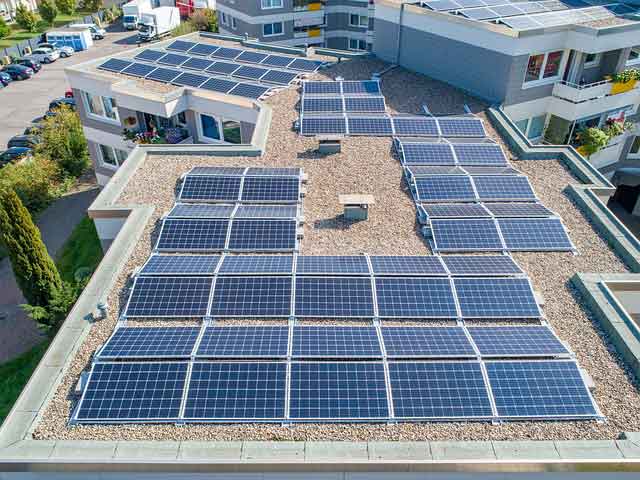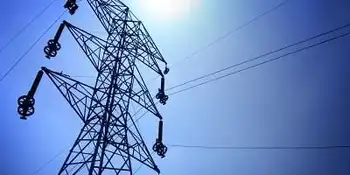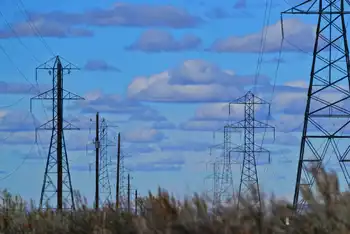Energy Companies Working To Offer Wind Power
OKLAHOMA CITY, O.K. -- - Eager to harness the potential from the Oklahoma legendary winds, three of the four largest electric companies in the state are working to add wind-generated electricity to their energy portfolios.
Western Farmers Electric Cooperative is the furthest along, with construction expected to begin in the spring on a 64-megawatt wind farm northwest of Lawton. Zilkha Renewable Energy of Houston is developing the project and will sell the generated electricity -- enough to power 20,000 homes -- to Western Farmers.
Both Oklahoma Gas and Electric Co. and Edmond-based Oklahoma Municipal Power Authority also have announced plans to buy electricity from 50-megawatt wind farms. The two utilities are now accepting offers from companies to develop the projects.
American Electric Power-Public Service Co. of Oklahoma, however, has not announced plans to buy wind-generated power, even though its subsidiary, AEP Energy Services, develops wind farms.
"We have not had any customer demand for wind power generation," said Jeff Rennie, a spokesman for the Oklahoma utility.
The company has developed three wind farms in Texas and owns the rights to about 50 sites in Oklahoma, Texas and Arkansas.
"From a corporate perspective, we're very aggressive in going after wind power sources," Rennie said.
While AEP Energy Services and other developers have been building wind farms nationwide over the past two decades, they also have been improving the technology.
Advancing technology has helped drive down the cost of wind-generated electricity by more than 81 percent in about two decades. Wind power cost about 32 cents a kilowatt-hour when it first became popular in 1981, but prices now range from 4 cents to 6 cents a kilowatt-hour.
A federal tax credit -- which is scheduled to expire at the end of the year -- can lower the charge to just more than 2 cents, rivaling the cost of more traditional coal- and natural gas-fired generators.
The state's four largest electric utilities said they pay between 2 cents and 4 cents a kilowatt-hour for natural gas- powered electricity and from a fraction of a penny to less than 2 cents for coal-powered electricity.
Unpredictable wind But while wind energy is becoming more affordable, it still has its limitations.
The main objection utilities have to wind power is that the generators work only when the wind is blowing.
"Our primary concern is maintaining our generation levels to meet those load requirements on a minute-by-minute, second-by-second basis," said Brian Hobbs, director of enterprise management at Western Farmers. "But wind is unscheduled and intermittent. You can forecast when you think it is going to blow, but you don't really know until after the fact, when you will have wind."
That intermittence, he said, is part of the reason Western Farmers has contracted for only 64 megawatts of wind power -- about 4.2 percent of the company's current load.
While Oklahoma and the surrounding states have more than enough wind to meet much of their energy needs, they don't always have wind at the right time.
Wind is most prevalent in the spring when energy needs are lowest. And the hot August afternoon is when wind is less likely to come sweeping down the plains.
That discrepancy does little to help utilities from a peak production standpoint.
The companies must be able to achieve peak electricity production at all times. But unlike traditional fossil fuel generators, wind farms cannot be turned on at the flip of a switch.
"So based on the weather in Oklahoma, the prospect of having wind-generated electricity at peak times is not great," said Tom Littleton, facilities engineer at the Oklahoma Municipal Power Authority.
But while wind energy cannot help the utilities with their peak requirements, it can help them with their costs during those peak times.
Utilities rely mostly on their least expensive coal and natural gas generators. But they also have so-called "peaking units," which are very inexpensive to set up but costly to operate. Those generators are used only in the summer when demand is at its highest.
"There is already backup generation sitting there," said Michael Bergey, president of the Oklahoma Renewable Energy Council. "But if they're fortunate enough to have a strong wind when they need the power, they save a lot of cost because those peakers are expensive to run."
Storage technology lacking While utilities are quickly adding wind power, it is unclear how much they can depend on it. At some point, utilities will be limited by the inability to regulate how much power the generators produce at any given time.
Wind farm developers are already looking at storage options, although all options are still too expensive, said Rick Walker, director of renewable energy business development at AEP Energy Services.
Batteries could serve short- term regulatory needs but would not provide long-term storage.
Some companies have looked at using excess electricity generated in the spring to pump water into a reservoir. In the summer, that water could be released through hydroelectric generators.
Utilities also could pump compressed air into salt caverns during the spring and release the air through special turbines in the summer.
Another option is to store excess electricity in fuel cells until summer, although fuel-cell technology is still in its infancy.
"The problem is that all of these options double your cost for energy," Walker said. "Economically, when gas is averaging $3 or $4, it doesn't make much sense to invest in that kind of storage. But for the long term, if we have a national energy policy where we want to end our reliance on imported fossil fuels, we will probably need some kind of energy storage."
While it is unlikely that wind power will soon surpass fossil fuels in electrical generation, the success of the first round of turbines being built in Oklahoma could determine its future.
"If they get into mass production and get the cost of construction down, there might come a time when it could be competitive," Oklahoma Municipal's Littleton said.
Despite the current limitations of wind power, Harold Hale believes in its future.
The director of legislative and regulatory affairs for the Oklahoma Association of Electric Cooperatives said it's good, clean energy that also will be a good source of revenue for landowners.
Hale, whose association includes Western Farmers Electric Cooperative, said the new wind farm development in southwest Oklahoma is only the beginning. In the future, he sees similar wind farms supplying rural electric cooperatives statewide.
"We think it's the coming thing," Hale said.
Related News

Scientists Built a Genius Device That Generates Electricity 'Out of Thin Air'
LONDON - They found it buried in the muddy shores of the Potomac River more than three decades ago: a strange "sediment organism" that could do things nobody had ever seen before in bacteria.
This unusual microbe, belonging to the Geobacter genus, was first noted for its ability to produce magnetite in the absence of oxygen, but with time scientists found it could make other things too, like bacterial nanowires that conduct electricity.
For years, researchers have been trying to figure out ways to usefully exploit that natural gift, and they might have just hit pay-dirt with a device they're calling the…




